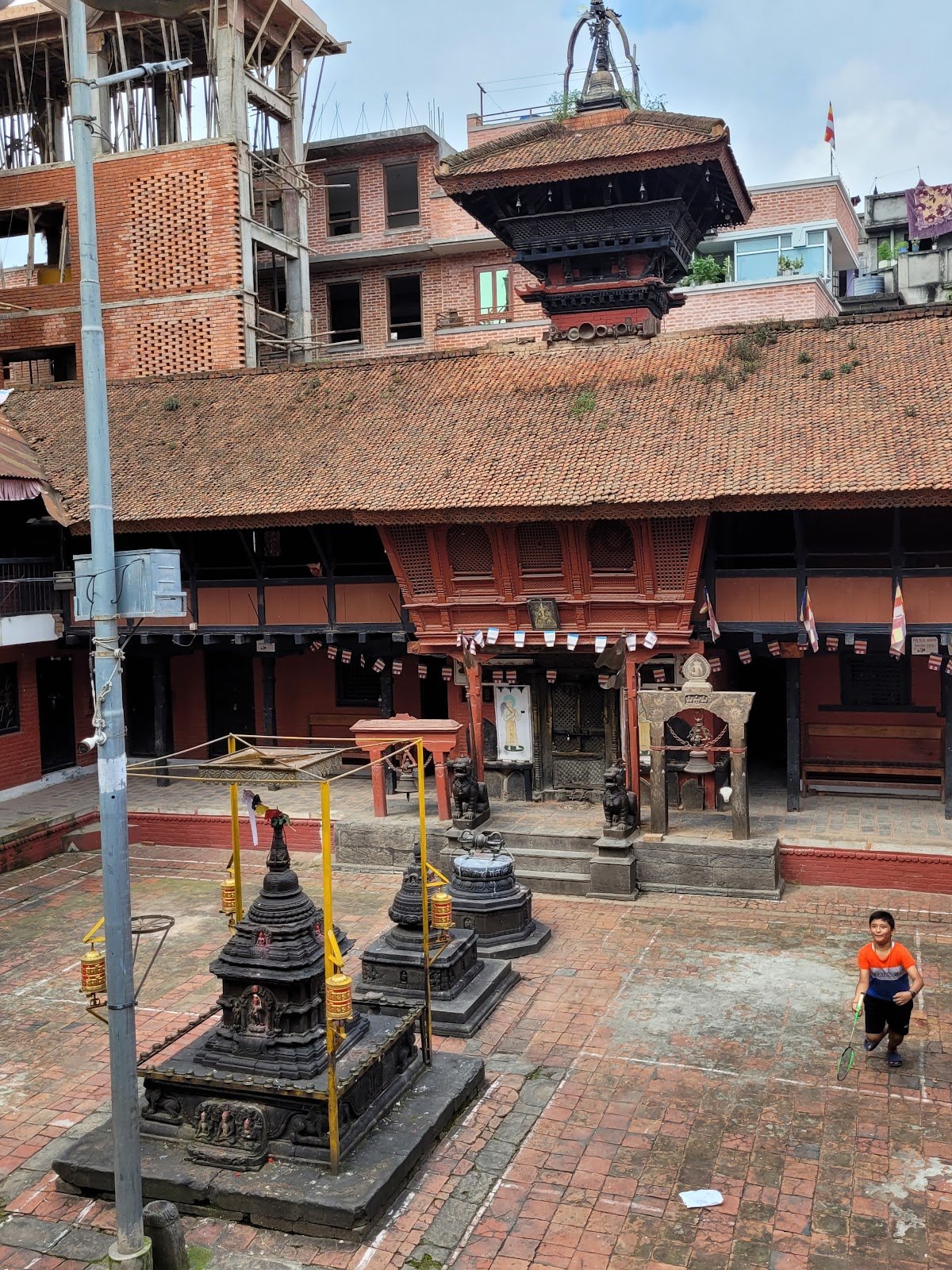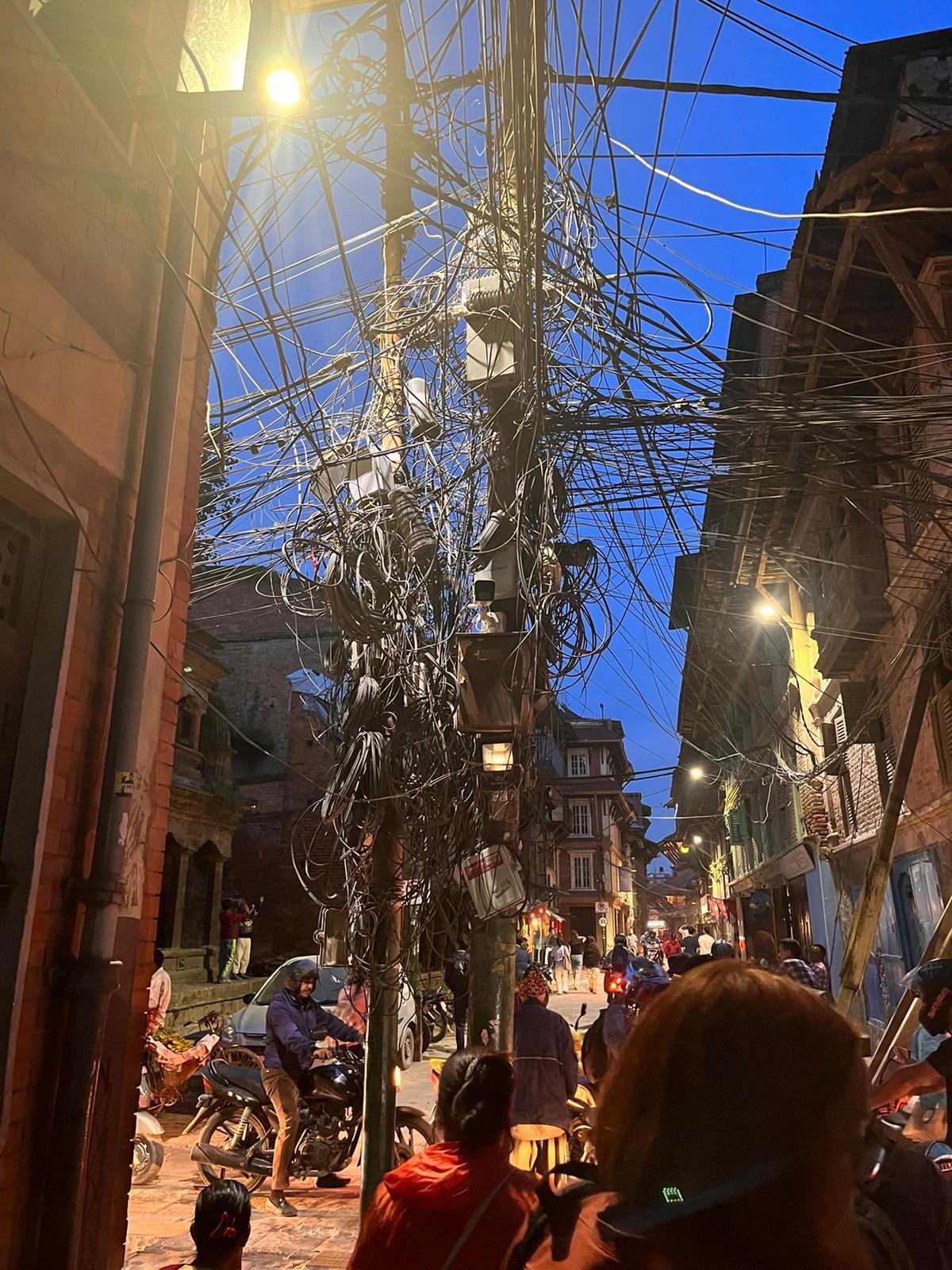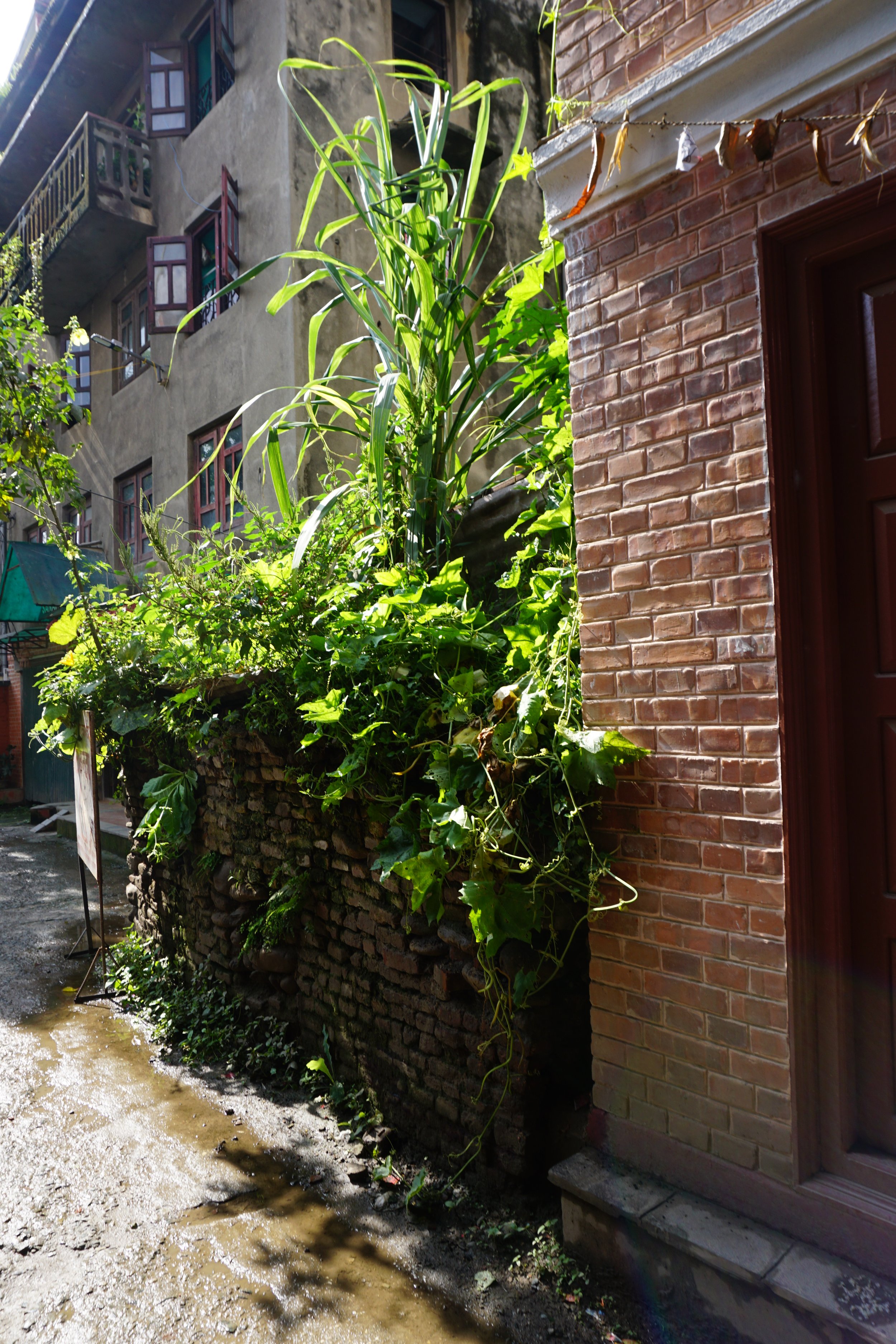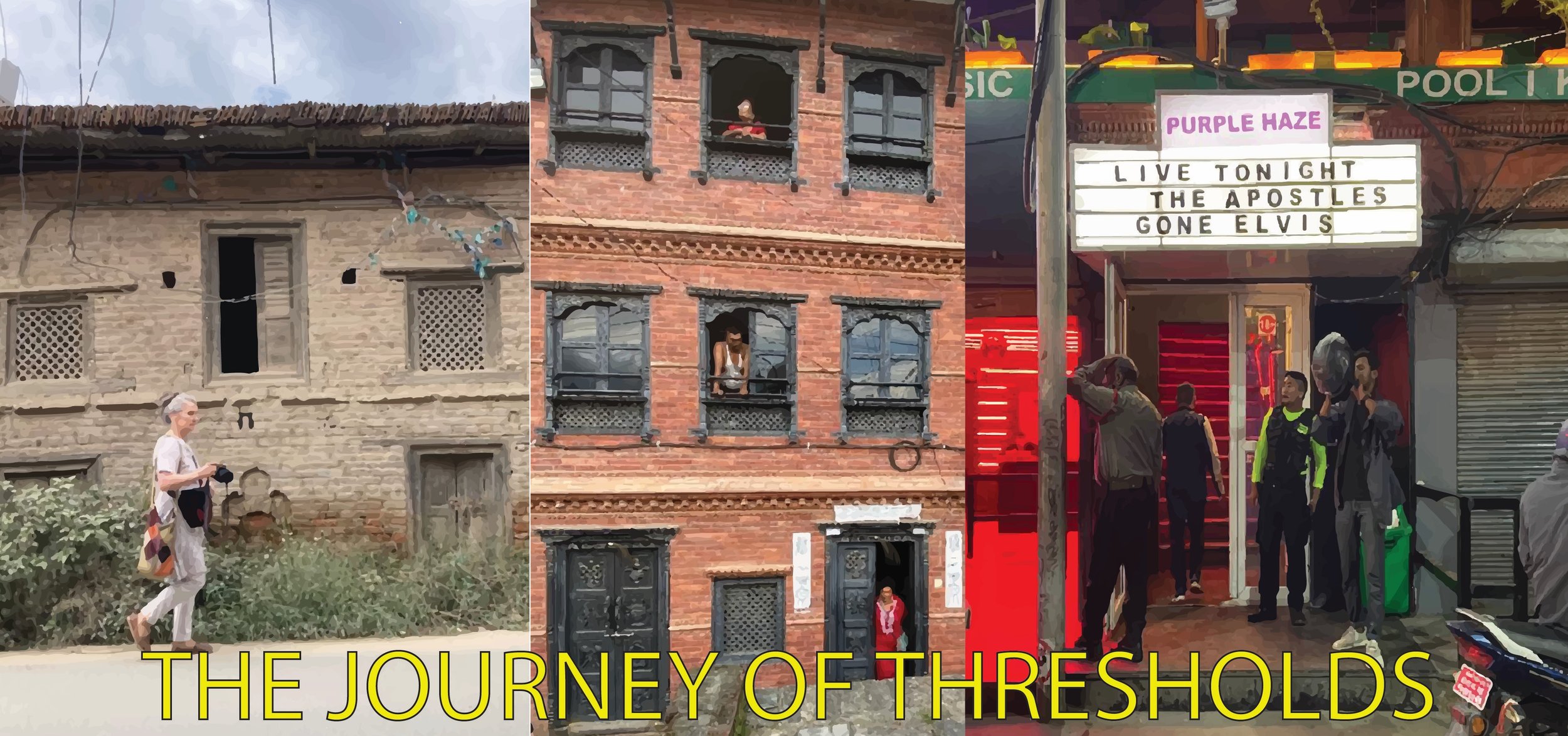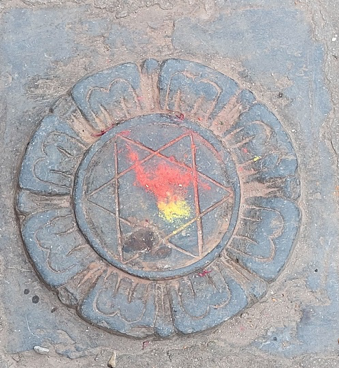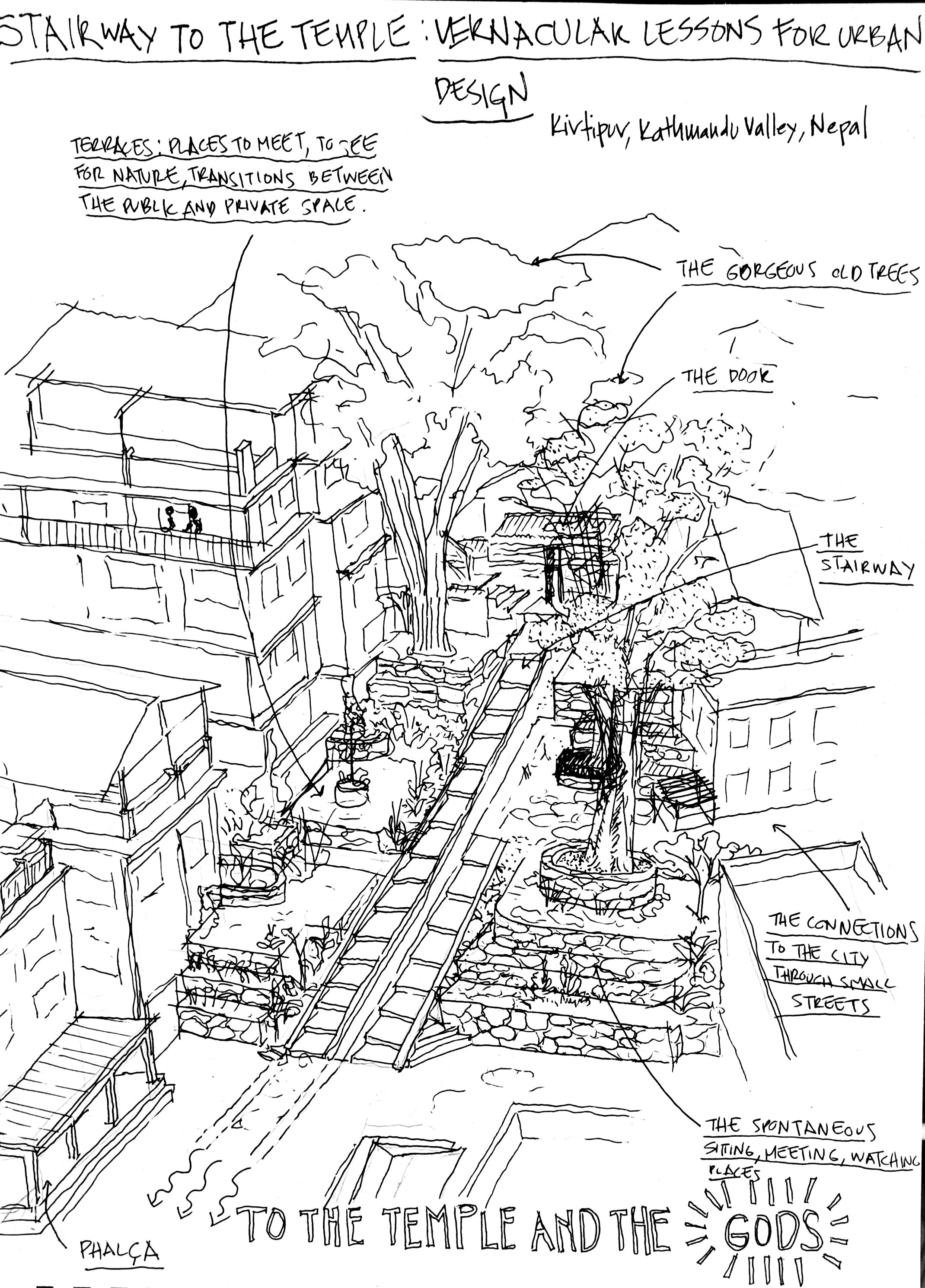Madina Rai is an Assistant Researcher at Social Science Baha, Kathmandu. She holds double master’s degrees in English literature and anthropology, and her research interests include gender, migration, indigeneity, and social justice.
Fig. 1: Pikha Lakhu made of metal found in Patan area. Photos by Madina Rai.
A Pikha Lakhu is a small, usually ‘mandala’[1]-shaped ritual site, a sanctum, and a place of daily worship for the Newar household. Etymologically, Pikha Lakhu means ‘in the front of the door’ — that the site is situated directly in the front of the door or the main entrance of the house. The Newars typically start their day and the ritual only after worshiping at Pikha Lakhu. They believe that it is the ‘Kumar’, brother of lord Ganesha, that they worship at Pikha Lakhu. This practice of worshipping at Pikha Lakhu is believed to have started during the Malla period.
Pikha Lakhu can be found in various shapes, designs, and materials. Around Kirtipur, one of the oldest Newar settlements, they are mostly carved on stones, marbles or on the open soil at the threshold. In the Patan area, they are made of metal, mostly brass, which was provided by the Patan municipality to each Newar household as part of the Municipality’s efforts to preserve the rich culture and heritage around the area.
In the Newari culture, Pikha Lakhu carries a range of meaning, both in terms of space and time. From a socio-symbolic perspective, it stands as a demarcation between public and private space. It also marks personal moments of transition in the life of the members of the family, from wherein they enter into a new world socially as well as spiritually.
Liminal Space
Fig. 2: At the Pikha Lakhu, the last 45th-day rite for the deceased is performed by a family at Pimbahal, Patan. Photo by Madina Rai.
Drawing on Arnold v. Gennep’s and Victor Turner’s concept of ‘rite of passage’, Pikha Lakhu signifies ‘liminal space’, the threshold where life altering transformations take place. For example, a bride formally becomes a member of her new family after stepping on the Mandap created upon Pikha Lakhu. Her journey of transition into a new world, a new role, starting from leaving her birth home and to embracing a new family, culminates and ends here after the ritual of treading upon this very sanctum.
When a daughter comes of age, the initiation ceremony, Bel Bibah, Gufa Nikalne is performed right in this sanctum. As the ‘puja’ is performed, the daughter is considered to have entered a new phase of adulthood and is allowed to participate in almost every activity that is suitable for a young adult woman.
Similarly, the last rite for the deceased after the death of a family member is also performed here. After the mortuary ritual, the deceased is believed to transcend into the other world, from where there is no coming back in any form.
A Boundary Between Private and Public Space
Pikha Lakhu also works as a boundary marker. It stands to define as to where the public space ends for the outsiders and from where the private space starts. It draws an (un)discernible line for the outsiders that they are not to transgress and encroach upon private land/space of others, while for the insiders, the family members, it gives a sense of safety and ownership of a private space belonging to the other side of the line.
Fig, 3: Pikha Lakhu in Kirtipur, a Newar settlement, are mostly designed and hand-carved on the stones and marble. Photos by Madina Rai.
A Symbolic Shrine
Pikha Lakhu sits at the heart of the cultural life of the Newar community, at the centre of which is sheltered a common ancestral god. In some Newar traditions (such as Newars from Bhaktapur), when a family splits, they are not allowed to establish a separate Pikha Lakhu in their place. The new family must visit the old house to perform every rite and ritual that is to be observed at the auspices of Pikha Lakhu. As such, from the perspective of the sense of family and kinship, Pikha Lakhu stands as a sacred shrine where the clan/tutelary god resides, binding together the families of the Newars.
Pikha Lakhu, therefore, carries a central space in Newari culture. It not only guides their everyday religious and cultural activities, but offers a philosophical anchor to the universe called life itself. It may be argued that it is through the material, spiritual, and symbolic presence of (in)tangible heritage such as Pikha Lakhu that the Newars are able to keep their identity, the sense of who they are, alive. Likewise, what is also kept intact, amidst struggles and challenges, is the sense of ownership of the ancestral land in the face of relentless urbanisation and globalisation.
Fig. 4: A ritual, part of the annual Paro Bhoye procession before the Mohani festival, is performed on a Pikha Lakhu in Kirtupur.
Notes:
[1] A figure, usually circular, representing the universe in Hindu and Buddhist symbolism.



